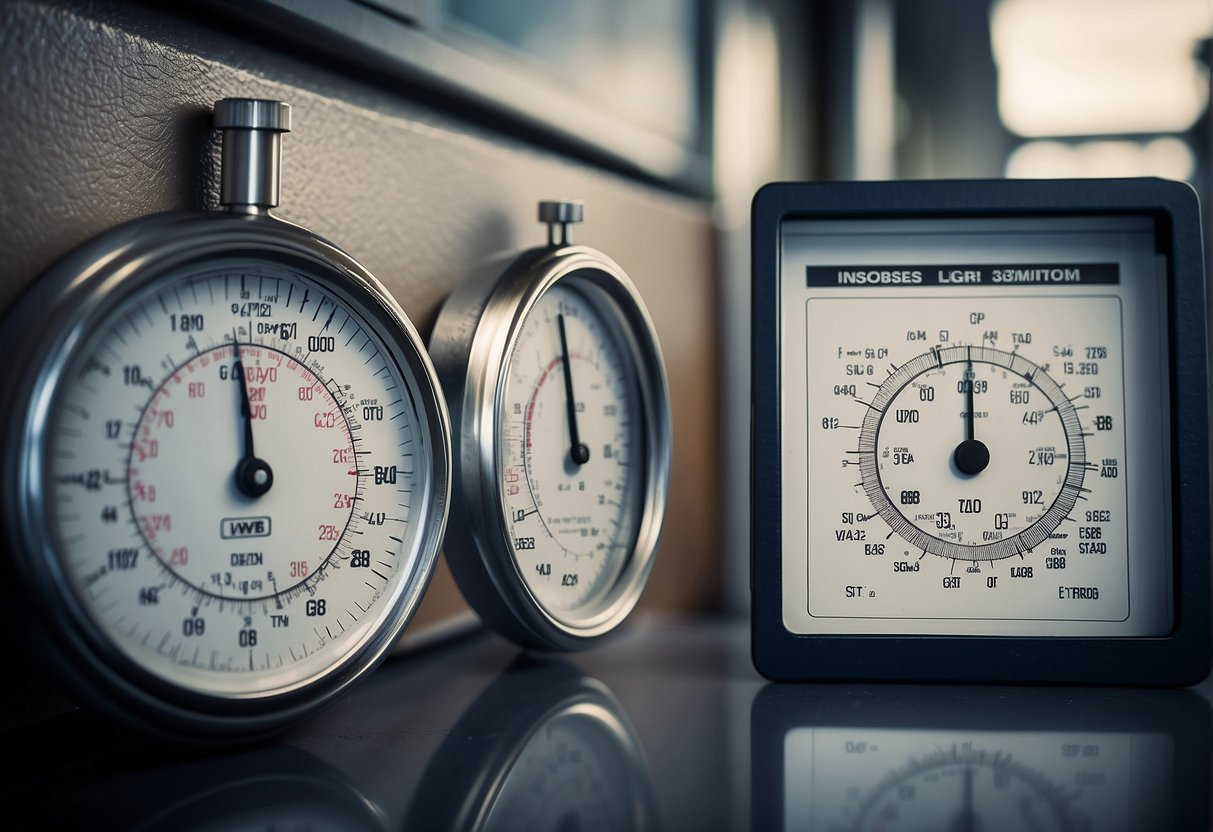When it comes to giving birth, women are often told to expect the unexpected. While it’s impossible to predict exactly how long labor will last or how it will unfold, one thing is certain: giving birth requires a tremendous amount of energy. But just how many calories do you burn during labor?
Research suggests that labor can be considered a moderate-intensity workout, with women burning a significant number of calories throughout the process. One study observed that women in active labor burned an average of 400-600 calories per hour Caloric Burn in Labor: Unveiling the Numbers. However, it’s important to note that every labor is different, and factors such as the duration of labor and the intensity of contractions can impact the number of calories burned.
Understanding how many calories you burn during labor can be helpful for a number of reasons. For one, it can give you a better idea of how much energy your body is expending during this physically demanding process. Additionally, knowing how many calories you’re burning can help you make informed decisions about your nutrition and caloric intake during pregnancy and postpartum recovery.
Understanding Labor and Calorie Burn
Stages of Labor
Labor is divided into three stages: early labor, active labor, and the delivery of the placenta. During early labor, the cervix begins to thin out and dilate. Contractions may be mild and irregular, and the woman may not be in active labor yet. Active labor is when the cervix is dilating rapidly and contractions are becoming more intense and regular. This stage can last for several hours, and the woman may need to push during the final stage of labor to deliver the baby.
Calorie Burn and Physical Intensity
Labor is a physically demanding process that can burn a significant number of calories. The number of calories burned during labor can vary based on factors like intensity, duration, and individual characteristics. According to CGAA, on average, women burn between 300 and 600 calories during a typical labor. This number is based on the assumption that labor lasts for approximately 8 hours, and that the average woman spends 3 hours of that time in active labor (i.e. Contractions, pushing, etc).
The physical intensity of labor can also affect the number of calories burned. During active labor, the uterus contracts forcefully to help push the baby through the birth canal. These contractions require a significant amount of energy and can increase the number of calories burned. The more intense the contractions, the more calories the woman is likely to burn.
In summary, labor is a physically demanding process that can burn a significant number of calories. The number of calories burned during labor can vary based on factors like intensity, duration, and individual characteristics. Women can expect to burn between 300 and 600 calories during a typical labor, with the physical intensity of the contractions affecting the number of calories burned.
Factors Influencing Calorie Burn During Labor
Several factors influence the number of calories burned during labor. Here are three of the most significant factors:
Duration of Labor
The duration of labor can significantly affect the number of calories burned. According to a study, women can burn 400 to 700 calories per hour of labor. Therefore, the longer the labor, the more calories a woman is likely to burn.
Individual Metabolism
Individual metabolism also plays a role in the number of calories burned during labor. Women with a higher metabolism will tend to burn more calories than those with a lower metabolism. However, it is important to note that metabolism is just one of many factors that influence the number of calories burned during labor.
Type of Delivery
The type of delivery can also affect the number of calories burned during labor. According to CGAA, women who have a vaginal delivery tend to burn more calories than those who have a C-section. This is because vaginal delivery requires more physical effort from the mother.
In conclusion, several factors influence the number of calories burned during labor. The duration of labor, individual metabolism, and type of delivery are just a few of the most significant factors. It is important to note that while labor can burn calories, it is not a reliable method for weight loss.
Caloric Expenditure in Different Labor Scenarios
The number of calories burned during labor varies based on several factors, including the intensity, duration, and type of delivery. Here are the caloric expenditure estimates for different labor scenarios:
Vaginal Childbirth
Vaginal childbirth is the most common type of delivery. On average, women burn between 300 and 600 calories during an eight-hour labor, with three hours in active labor [1]. The exact number of calories burned during vaginal delivery varies based on the woman’s weight, age, and activity level. Women who are overweight or have a higher body mass index (BMI) may burn more calories during labor than women who are of average weight.
Emergency C-Section
An emergency C-section is a surgical procedure that is performed when a vaginal delivery is not possible. During an emergency C-section, women burn fewer calories than during a vaginal delivery. This is because the delivery is quicker and less physically demanding. On average, women burn between 150 and 250 calories during an emergency C-section [2]. However, the exact number of calories burned depends on the woman’s weight, age, and activity level.
Assisted Deliveries
Assisted deliveries, such as forceps or vacuum-assisted deliveries, are performed to help the baby move through the birth canal. During an assisted delivery, women burn fewer calories than during a vaginal delivery but more than during an emergency C-section. On average, women burn between 200 and 400 calories during an assisted delivery [3]. However, the exact number of calories burned depends on the woman’s weight, age, and activity level.
In conclusion, the number of calories burned during labor varies based on several factors, including the type of delivery. Women who are concerned about their caloric expenditure during labor should consult with their healthcare provider. It is important to note that while the number of calories burned during labor is not significant, the physical demands of labor can still lead to fatigue and exhaustion. Therefore, women should ensure they are adequately nourished and hydrated during labor to maintain their energy levels.
[1] (https://www.cgaa.org/article/how-many-calories-do-you-burn-during-labor)
[2] (https://www.healthline.com/health/pregnancy/calories-burned-during-labor)
[3] (https://www.whattoexpect.com/pregnancy/labor-and-delivery/calories-burned-during-labor/)
Postpartum Recovery and Caloric Needs
After giving birth, a woman’s body undergoes several changes that require adequate nutrition and rest. One of the most important aspects of postpartum recovery is proper calorie intake, especially for women who are breastfeeding.
Immediate Postpartum Period
In the immediate postpartum period, a woman’s body is still recovering from the physical stress of childbirth. During this time, it is important to eat a balanced diet that includes plenty of fruits, vegetables, lean proteins, and whole grains. According to What to Expect, a good postpartum meal might include oatmeal with low-fat milk and melon for breakfast, and light tuna with celery and hard-cooked egg on whole grain bread for lunch.
It is also important to stay hydrated by drinking plenty of water and other fluids, especially if the woman is breastfeeding. In addition, many women experience retained fluids after giving birth, which can make them feel bloated and uncomfortable. Drinking plenty of fluids can help flush out these fluids and reduce swelling.
Long-Term Recovery and Exercise
In the long-term recovery period, a woman’s body continues to heal and adjust to the new demands of motherhood. This is a good time to focus on establishing healthy habits, including regular exercise and a balanced diet.
According to the CDC, breastfeeding women require an additional 330 to 400 calories per day compared to their pre-pregnancy calorie intake. This means that a breastfeeding woman who previously consumed 2,000 to 2,800 calories per day should now aim for 2,330 to 3,200 calories per day.
It is also important to incorporate exercise into the daily routine, but only after the woman has been cleared by her healthcare provider. Exercise can help with weight loss and improve overall health and well-being. However, it is important to start slowly and gradually increase intensity and duration over time.
In conclusion, postpartum recovery requires a balanced diet, proper hydration, and adequate rest. Women who are breastfeeding require additional calories to support milk production, and exercise can help with weight loss and overall health. By taking care of themselves, women can ensure a smooth and healthy recovery after childbirth.
Nutrition and Caloric Intake During Pregnancy
Pregnancy is a time when a woman’s body undergoes significant changes, and proper nutrition is crucial for both the mother and the developing baby. A healthy diet during pregnancy ensures that the mother gets all the necessary nutrients, vitamins, and minerals, which are essential for the baby’s growth and development.
Healthy Diet for Pregnant Women
A healthy diet for pregnant women should include a balance of carbohydrates, proteins, and fats. It is recommended that pregnant women consume 2-3 servings of protein daily, such as lean meat, poultry, fish, beans, nuts, and tofu. Additionally, it is essential to consume healthy fats, such as avocado, nuts, and seeds, which are rich in omega-3 fatty acids and are beneficial for the baby’s brain development.
Pregnant women should also consume plenty of fruits and vegetables, which are packed with essential vitamins and minerals. Dark, leafy greens like spinach and kale are rich in folate, which is essential for the baby’s neural tube development. Other fruits and vegetables like oranges, strawberries, and bell peppers are rich in vitamin C, which helps the body absorb iron.
Managing Caloric Intake Pre-Labor
As the baby grows, the mother’s caloric intake needs to increase, but it is important to manage caloric intake to avoid excessive weight gain. The American Pregnancy Association recommends that pregnant women increase their calorie intake by 300 calories per day during the second and third trimesters.
It is important to note that the number of calories burned during labor varies depending on several factors, such as the mother’s weight, the length of labor, and the intensity of contractions. However, it is recommended that pregnant women consume enough fluids, especially water, to stay hydrated during labor.
In conclusion, proper nutrition and caloric intake during pregnancy are essential for the mother and the developing baby. A healthy diet that includes a balance of carbohydrates, proteins, and fats, along with plenty of fruits and vegetables, can help ensure that the mother gets all the necessary nutrients. Additionally, managing caloric intake during pregnancy can help avoid excessive weight gain, which can lead to complications during labor.
Frequently Asked Questions
What is the average calorie expenditure during childbirth?
The average woman burns between 500 and 600 calories during childbirth, according to CGAA. The number of calories burned during delivery depends on several factors, including the length of labor, the weight of the baby, and the type of delivery. Women who have longer labor or deliver larger babies may burn more calories.
Does the type of delivery (natural vs. cesarean) affect calorie burn?
Yes, the type of delivery can affect calorie burn. Women who have a cesarean delivery may burn fewer calories than women who have a vaginal delivery. According to CGAA, the average number of calories burned during childbirth is around 2,000. However, this number can vary greatly depending on the individual, the specific circumstances of the birth, and how active the mother is during the labor and delivery process.
How does the presence of an epidural influence calorie consumption during labor?
The presence of an epidural can influence calorie consumption during labor. According to Kidsly Mom!, the use of an epidural may reduce the number of calories burned during labor. However, the reduction in calorie burn is likely to be minimal.
What is the calorie burn comparison between labor and other physical activities?
The calorie burn during labor is comparable to that of other physical activities. According to Wren Kitchens, parenting can burn up to 50,000 calories in a month. This is due to the physical demands of caring for a newborn baby. However, the calorie burn during labor is likely to be higher than that of most other physical activities.
How many additional calories are burned in the postpartum period?
The postpartum period can also result in additional calorie burn. According to Wren Kitchens, breastfeeding can burn up to 500 calories per day. This is due to the energy required to produce breast milk. However, the number of additional calories burned in the postpartum period varies greatly depending on the individual.
Can the intensity of labor contractions affect the total calories burned?
Yes, the intensity of labor contractions can affect the total calories burned during labor. According to MyFitnessPal.com, manual labor can burn up to 724 calories in 2 hours. This is due to the physical demands of the activity. Similarly, the more intense the labor contractions, the more calories a woman is likely to burn during childbirth.

My name is Laura, and as a mother of two, I understand firsthand the joys and challenges of raising a child. That’s why I created this website, to provide a comprehensive and trustworthy source of information and support for new and expectant parents.





